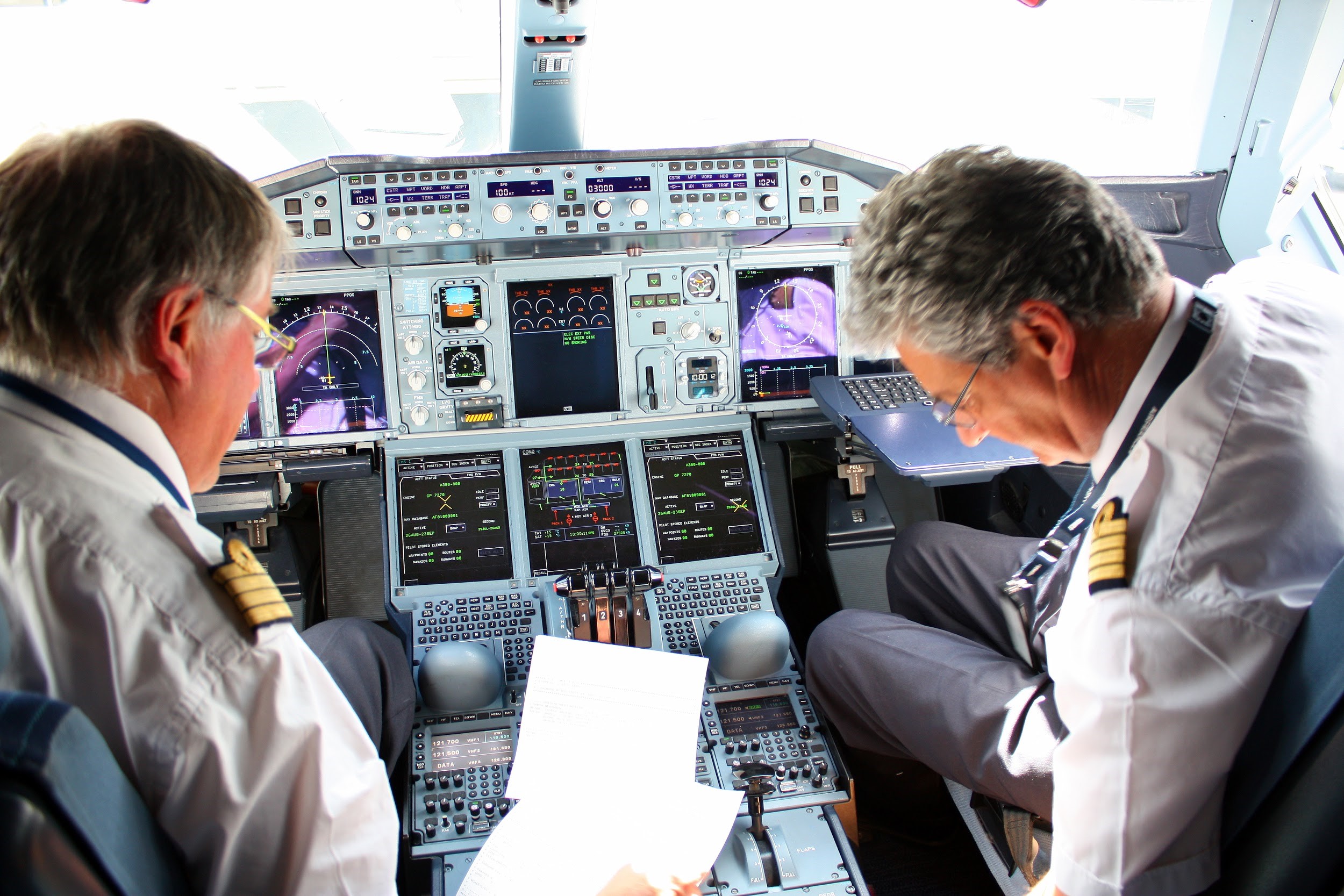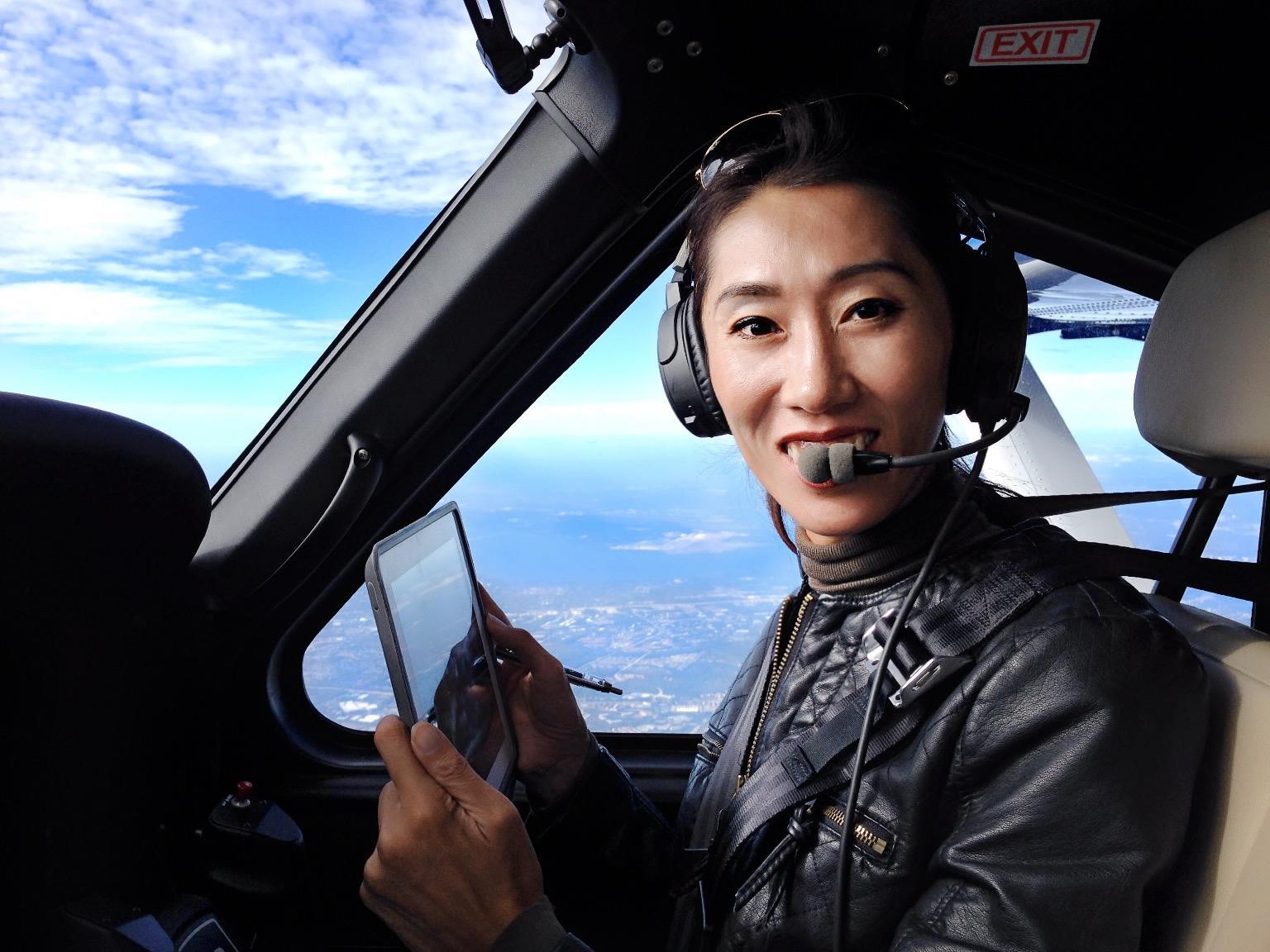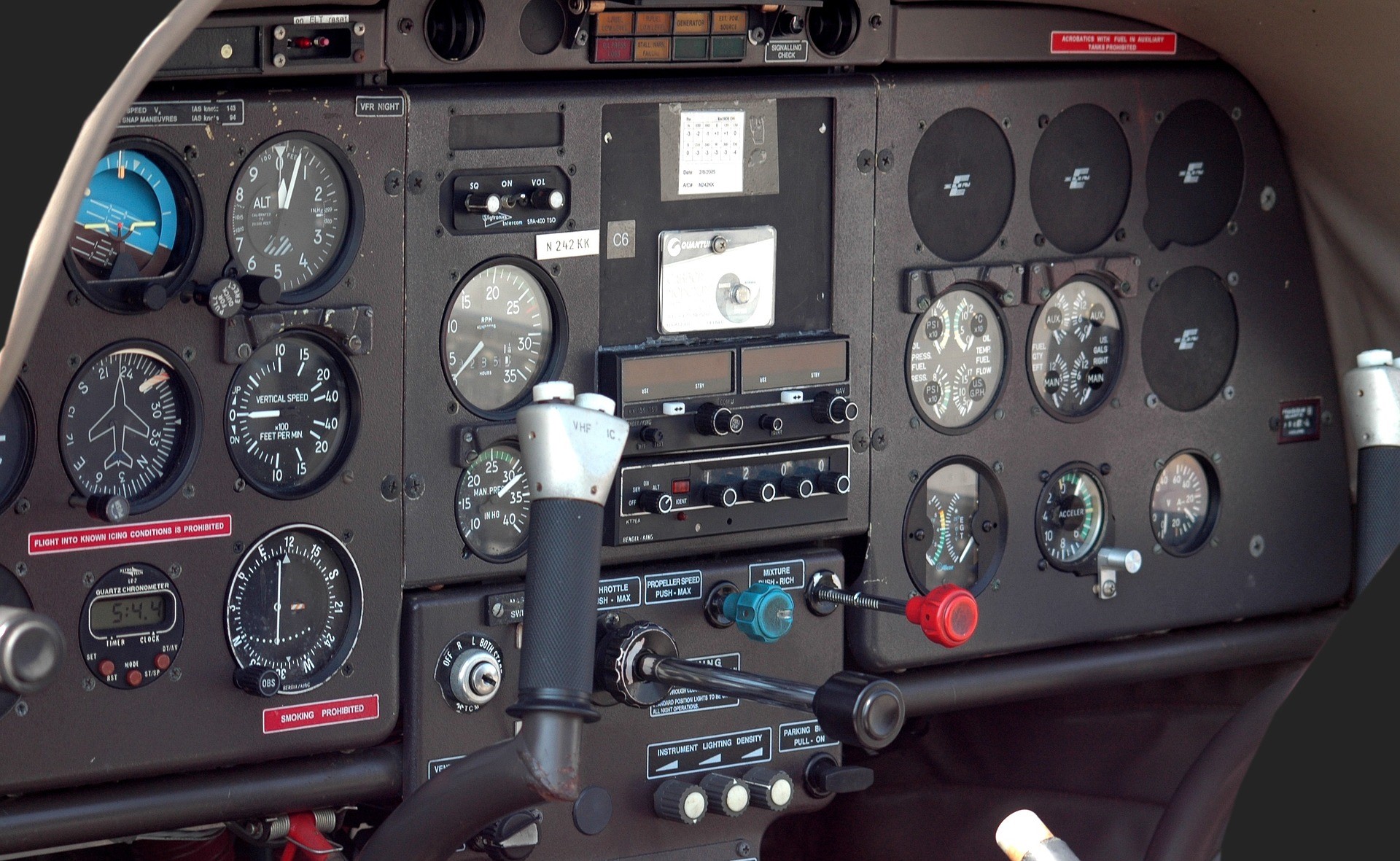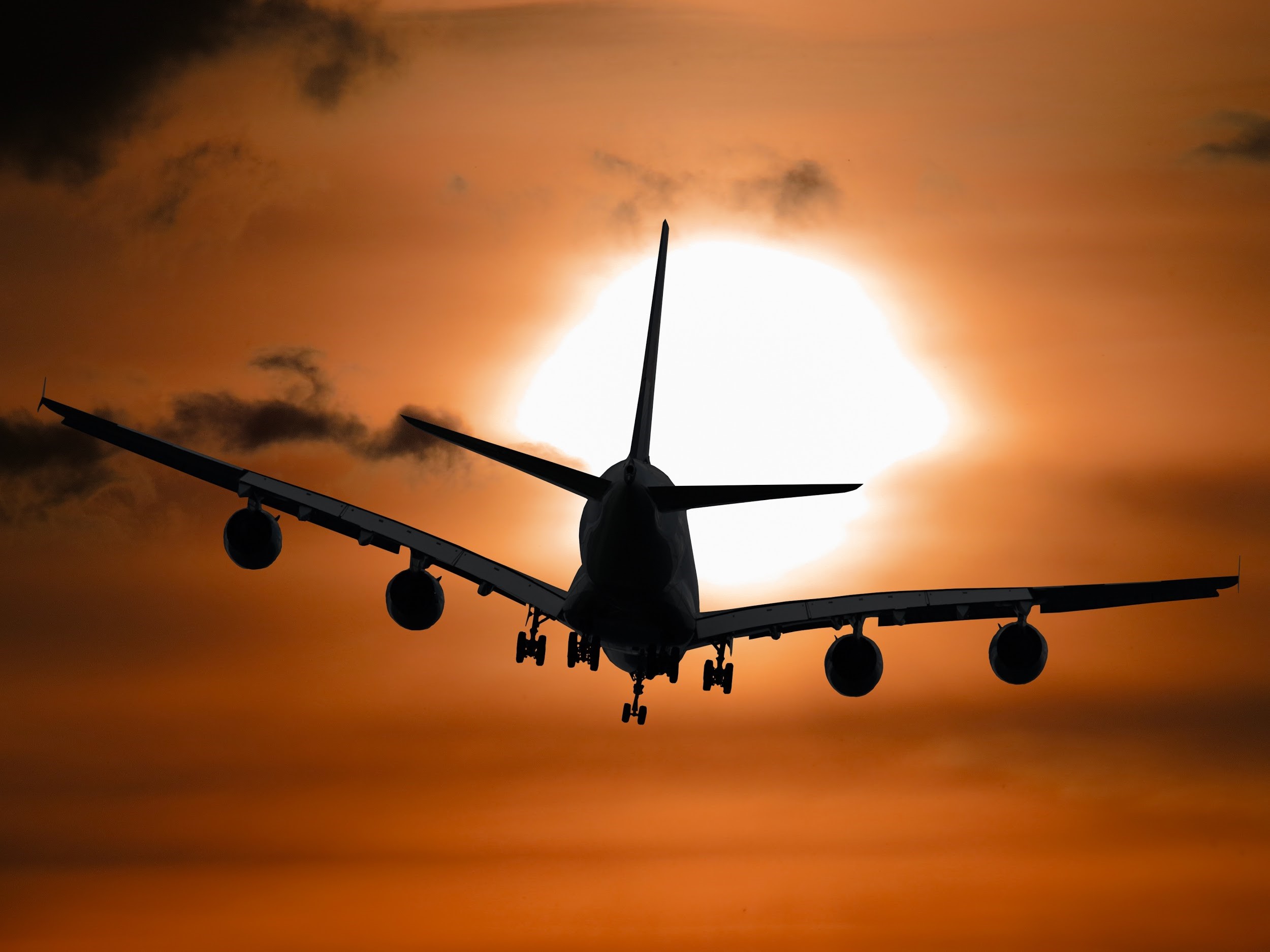InTrans / Dec 04, 2017
Transportation & me: An airline or commercial pilot
Go! Magazine
 posted on December 4, 2017
posted on December 4, 2017
Transportation doesn’t just happen on land, it happens in the air and across the water. For our next few careers in transportation, we’re taking to the skies.
Specifically, we’ll be talking about what it takes to be a pilot. By definition, a pilot is “a person who operates the flying controls of an aircraft,” but in reality, the job of a pilot is much more complex and involves numerous tasks that extend beyond simply operating the plane.
Not only does it take a lot of work to be a pilot, it also takes a lot of work to become a pilot, too. There are a few different routes you can take, but all of them require dedication and focus. Is a pilot’s life for you? Here’s the facts, we’ll let you decide.
A pilot’s life for me?
First, we’ll take a look at all the things you’re accountable for as a pilot; after all, pilots have a huge amount of responsibility. Pilots are responsible for more than just flying the aircraft, their responsibilities include numerous tasks to make sure the flight is as safe and efficient as possible.
For example, pilots have to check the overall condition of the aircraft before and after every flight. They have to ensure the aircraft is balanced and that it’s below the weight limit. They also have to verify that the fuel supply is adequate for the journey and that the weather conditions are acceptable for flight. Then they need to submit their flight plans to air traffic control and communicate with air traffic control over the aircraft’s radio system.

Once they’re ready for takeoff, a pilot operates and controls the aircraft along planned routes and during takeoffs/landings. The pilot has to be able to navigate the aircraft by using cockpit instruments and visual references. They also need to monitor engines, fuel consumption, and other aircraft systems during flight. A pilot needs to be ready to respond to a variety of changing conditions, such as weather events or unexpected emergencies, like a mechanical malfunction.
Types of pilots
There are two major paths you can go down when you’re on your way to becoming a pilot: an airline or commercial pilot (you could also become a pilot via the military, but we won’t talk about that much in this article). Both airline and commercial pilots can operate airplanes, helicopters, and other aircraft.

Photo from Wikipedia via Kigenkigen.
Commercial pilots typically work in unscheduled flight activities like charter flights, aerial tours, firefighting, crop dusting, and aerial application. Commercial pilots may have additional duties like scheduling flights, arranging aircraft maintenance, and loading luggage. Commercial pilots may also transport company executives, in which case, they will also greet the passengers before the flight.
Airline pilots work for airlines that transport passengers on a set schedule. If you were the captain or pilot in command, you’d be responsible for supervising all other crew members on the flight. The copilot, also referred to as “second-in-command” or “first officer,” shares the captain’s flight duties. Some older planes also require a flight engineer, whose job is to monitor and operate the controls. However, these tasks are automated in newer planes.
Training & education
Commercial pilots only need a high school diploma (or equivalent) and a commercial pilot’s license awarded by the Federal Aviation Administration (FAA) to start their career as a commercial pilot. The most common path to becoming a commercial pilot is to complete flight training with an independent FAA-certified flight instructor’s school or another school that offers similar training, like a two- or four-year college or university.
Airline pilots typically start their careers off as a commercial pilot or flight instructor. Commercial pilots typically build up thousands of hours of flight experience in order to land a job with a regional or national/international airline. To make up the gap between training and flying for an airline, pilots can work as flight instructors and on-demand charter pilots, positions that generally require less experience than airline jobs.
Airline pilots usually need a bachelor’s degree and an FAA-issued Airline Transport Pilot (ATP) certificate. Like commercial pilots, airline pilots also need their commercial pilot’s license from the FAA. Airlines often run their own psychological and aptitude tests during the interview process in order to assess a candidate’s critical thinking and decision making skills under pressure.
There’s a third way to become a pilot that we haven’t mentioned until now, and that’s transferring over from the military. Military pilots can transfer to civilian aviation and are able to apply directly to airlines to become airline pilots. Lastly, airline and commercial pilots may be hired on-demand, in which case, they undergo on-the-job training in accordance with Federal Aviation Regulations (FARs), which usually includes six to eight weeks of “ground school.”
Skills & more
As a pilot, there’s a certain set of skills that you should have or work on having if you want to be successful.
Firstly, a pilot needs good communication skills. Pilots need to speak clearly and coherently when conveying flight information to air traffic controllers and other crew members. They also need to be able to listen carefully to instructions.
You also need good observational skills to make a good pilot. Pilots regularly watch screens, gauges, and dials to make sure that all systems are in working order, and this requires a certain amount of focus and an awareness of your surroundings. Furthermore, pilots must be able to see clearly, judge the distance between objects, and have good color vision.

Photo from pixabay user paulbr75
Pilots also need good problem solving skills in order to identify complex problems and solutions. For example, when a plane encounters turbulence (i.e., the violent or unsteady movement of air), pilots need to have the ability to assess the situation (weather conditions, etc.) and then request a change in the route or altitude from air traffic controller. Along with that, pilots need to have quick reaction time and good judgement when responding to imminent danger.
Outlook & salary
Perhaps, at this point, you find yourself wanting to be a pilot. If that’s the case, what’s the job outlook for this field?

Job growth for commercial and airline pilots between 2016 and 2026 is only expected to rise about four percent, which is a slower rate than average. Most job opportunities arise from the need to replace pilots as they retire or otherwise leave the workforce. That said, many pilots are expected to retire in the next decade as they reach the retirement age of 65.
The average median wage for airline pilots, copilots, and flight engineers was $127,820 in 2016, meaning that half of the workers in these positions made more than $127,000 per year and half of them made less. The highest 10 percent of pilots earned more than $208,000 in 2016. Most airline pilots begin their careers earning about $20,000 annually, and the average captain at a major airline earns $135,000 per year.
The median annual wage for commercial pilots was $77,200 in May 2016. This is significantly less than the median annual earnings for an airline pilot, which explains why there’s such a tendency for commercial pilots to want to become airline pilots. That said, the top 10 percent of commercial pilots earned more than $147,240 annually in 2016. A benefit to being a commercial pilot is you’d typically stay closer to home than a pilot working for an international airline.
Transportation & you
What do you think, now that you’re in the know? Is it a pilot’s life for you? As a pilot, you’d have to be ready to work long, irregular hours, especially as an airline pilot. It isn’t your typical “nine-to-five” job. However, for some, it might just be the right fit.
References
www.bls.gov/ooh/Transportation-and-Material-Moving/Airline-and-commercial-pilots.htm
www.bls.gov/ooh/Transportation-and-Material-Moving/Airline-and-commercial-pilots.htm#tab-2
www.bls.gov/ooh/Transportation-and-Material-Moving/Airline-and-commercial-pilots.htm#tab-4
www.bls.gov/ooh/Transportation-and-Material-Moving/Airline-and-commercial-pilots.htm#tab-5
Related links
More info on how to become a pilot: www.bls.gov/ooh/Transportation-and-Material-Moving/Airline-and-commercial-pilots.htm#tab-4
(Go! Magazine) Flight Q&A
By Hannah Postlethwait, Go! Staff Writer